I’ve been working hard on producing print material for Chintan these past few weeks, and haven’t had more than a couple of trips out to the field that weren’t canceled by afternoon downpours. A visit to the Seemapuri community, located near a landfill in the northeast region of municipal Delhi, was both a new and sensitive experience for me. Paul and I accompanied Zeeshan, one of our colleagues on Chintan’s mobilization team, to his meeting with the waste pickers who both live and segregate waste there.
The waste is collected on their various routes, and brought back to Seemapuri, where the segregation is done literally on everyone’s doorstep. Colorful, reeking piles of paper, plastic, rubber, organic waste and more, surround the entrances to people’s homes almost as if a giant storm of garbage had blown these dirty snowdrifts to rest against their outer walls. The women’s citrus colored saris and the impish, laughing children running about brighten the otherwise dingy neighborhood which seems to sag in haphazard assembly, threatening to cave in on itself in places.
On the back side of the tenements, a cemetery provides quiet rest for the deceased, save for when the children run through screaming and laughing in the midst of their play. I also learn that this is where the meetings are often held, on benches gathered near to headstones and cement grave coverings.
As with every site we’ve visited, Paul and I cause major distractions, drawing in swarms of curious eyes and rowdy shouting of the children who are excited to interact with these two strange-looking visitors. We also try to wait a while before pulling out cameras and video-recorders, knowing this will only weaken Zeeshan’s ability to get things organized, to calm the kids. After some debate with several of the men, it was decided that the meeting would be held in a small room where the boys study their Islamic teachings during the day. Seemapuri is a Muslim community, comprised of residents who have come here from West Bengal, a primarily-Muslim region in the far east of India where Bengali is spoken, and from where many Indian migrate to Delhi in hopes of better job opportunities.
Not only would this keep the crowd from hampering the meeting, but I was told that typically women are not allowed to enter the cemetery. They would have made an exception for me, but the meeting room was better as it allowed more privacy to record the video interviews– not many of the waste pickers we meet with have ever been filmed, or are naturally comfortable with the idea, so having a calm and private setting is ideal to get them talking.
I covered my head with my scarf and took off my shoes, following the rest of our small group– all males– into the study room. From there, I sat back and observed, since all questions were being directed to Paul. I encounter this often, at least whenever I’m accompanied, where the interactions are all directed to my male companions, as if I am not allowed or am incapable of answering for myself. Even though I’m quite familiar with these social hierachy rules from a textbook standpoint, it still has taken some tongue-biting to not react angrily for being treated in this manner. At Seemapuri, I tried to stand up against these women-as-inferior stigmas in a more effective reactionary manner, by looking my interviewees in the eye and asking them pointed questions that they had to answer to my face, and not to Paul or Zeeshan. But still, I ended up mostly in the background, snapping photos and observing while a crowd of intrigued women and children grew outside the door.
Later after the interviews with the men, we visited a woman in her home to also film her comments. Following this, Zeeshan spoke with her outside about something, leaving Paul and I to the mercy of a tittering and highly-energized group of girls– the woman’s daughter and friends, and a couple boys. The minute Zeeshan and the mother left the room, they shut the door, flipped on Bollywood music videos and attacked us with pleas of “dance, dance!”. I protested for as long as I could, pulling back as they grabbed my arm and tried to drag me off the bed to join them. Paul thought this was great, and only encouraged them more. Thanks Paul. In the end, I lost the battle and proceeded to trade my best dance moves with this cocky little boy who, I’ll admit, definitely knows how to throw his hips around much better than I.
Thank goodness Paul couldnt figure out how to work my camera, during the madness. No visual evidence of my East meets West So You Think You Can Dance debacle.
Below is a photo essay of our Seemapuri visit:

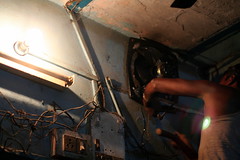
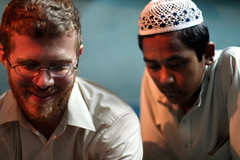
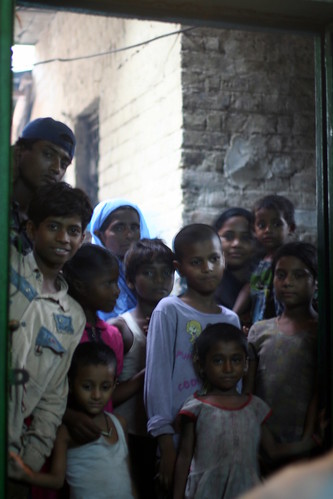


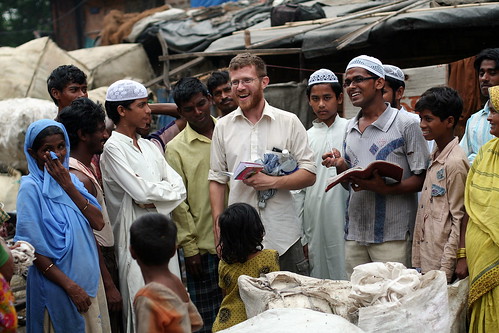


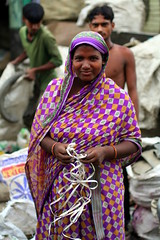

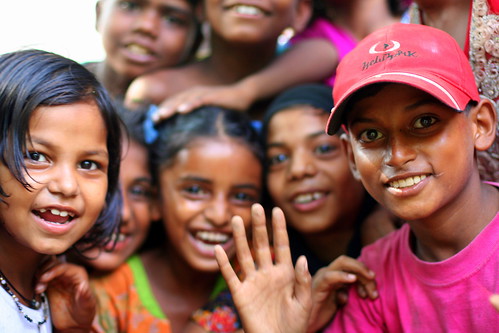
for more images from my outings, visit my Flickr collection at: http://www.flickr.com/photos/mackenzienicole/collections/72157605516876807/.
Posted By Mackenzie Berg
Posted Jul 17th, 2008


4 Comments
Tait Robinson
July 17, 2008
Great pics and commentary! you seem to be experiencing a lot of what djanita’s experienced in bangladesh from the standpoint of know-your-role female inferiority. it was an uncomfortable eye-opener for my brother and i when we were there. dunno how you and paul feel, but i think it taught us as much about india as it made us thankful for certain things we’d probably taken for granted back home.
well keep up the great work and pics!!
Paul Colombini
July 24, 2008
This BLOG is great… almost as great as your Bollywood dancing! 🙂
Danita - AP Peace Fellow 2008
July 26, 2008
Mackenzie – your pictures tell a real story about waste pickers. In my neighborhood here in Dhaka, close to the center where I am working there is a waste dump where I see women, children and older men picking up the waste but I don’t have the chance to talk to them. I’ll try to take some photos and send them to you – I am sure the issue is the same here. Good work!!!
I commend you on your effort to break the social stigma associated with women because I am hopeful that some other women may follow your attitude at some point in their life.
I’d love to share some ideas with you about presenting your work once back to the states, as I am hoping to come back to Denver to arrange a presentation. Let me know your thoughts.
Best,
Danita
payday loans utah
June 18, 2012
Everything is very open with a really clear clarification of the challenges.
It was really informative. Your website is useful. Thank you for
sharing! payday loans